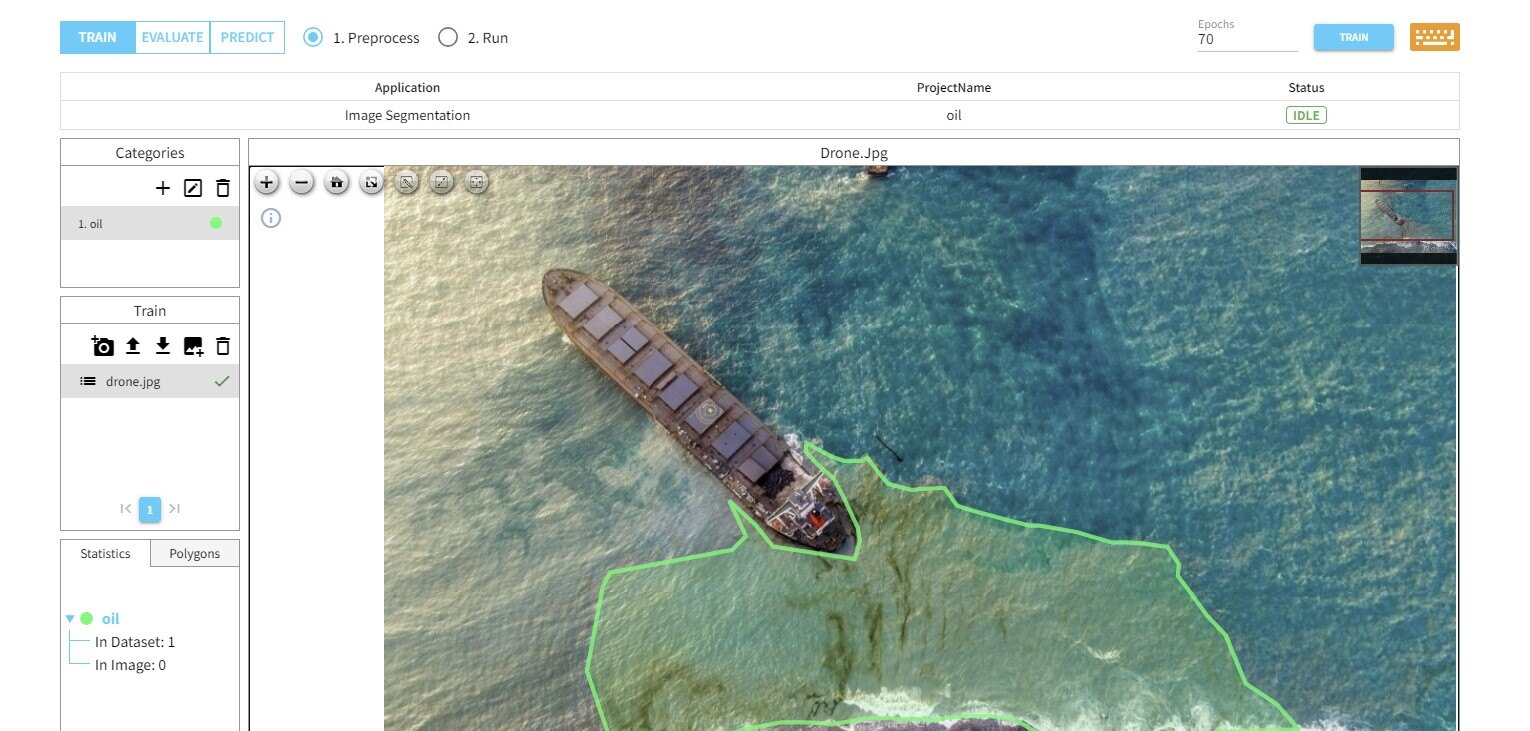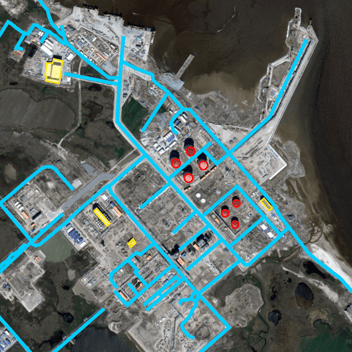Calculating Oil Spill Spread: Methods and Best Practices

Understanding the spread of oil spills is crucial for effective response and environmental protection.

Calculating oil spill spread area using Deep Block
The Importance of Accurate Oil Spill Spread Calculations
Accurately calculating the spread of an oil spill is essential for mitigating its impact on the environment. Immediate and precise measurements allow responders to implement effective containment and cleanup strategies, reducing the potential for widespread ecological damage.
If the spill area is not calculated quickly and accurately, it will not be possible to adequately prepare the necessary containment tools to manage the spilled oil. The method of containment varies depending on the spill area, and the amount of booms needed also depends on the oil spill area.
Therefore, calculating the oil spill area is crucial, and this calculation must be done accurately and swiftly. Oil spreads, and if it emulsifies, burning the oil as a cleaning method cannot be used. Hence, the oil spill area must be calculated quickly and accurately.
Failure to accurately assess the spread can lead to inadequate response measures, resulting in prolonged environmental degradation and higher cleanup costs. Therefore, it is critical to utilize reliable methods and tools for oil spill spread calculations.

Key Factors Influencing Oil Spill Spread
Several factors influence the spread of oil spills, each playing a significant role in determining the trajectory and impact of the spill. The type and amount of oil released are primary considerations; a lighter oil may spread rapidly across the surface and evaporate quickly, whereas a heavier oil might linger and potentially sink, complicating cleanup efforts. Weather conditions are also crucial; wind speed and direction can drive the oil across vast distances, while ocean currents can disperse the oil vertically and horizontally, further complicating containment efforts. Temperature affects the viscosity of the oil, influencing how easily it spreads; warmer temperatures can cause oil to thin and spread more quickly, while cooler temperatures can slow its movement.
Moreover, the geographic characteristics of the affected area, such as the topography of the seabed and the presence of natural barriers like coastlines, can alter the path and expansion rate of the oil. The local ecosystem, including flora and fauna, can also be impacted differently based on these variables.
Additionally, the nature of the oil itself—whether it is light and evaporates quickly or heavy and sinks—plays a crucial role in determining the spill's behavior, influencing not only the spread but also the environmental impact and the methods required for cleanup. Understanding these factors in detail helps in predicting the spread more accurately and devising more effective response strategies to mitigate the environmental impact of the spill.
Cleaning Up Methods of oil spill Spread
1. Small Spills (Up to 1m²)
- Absorbent Materials: Use absorbent pads, booms, or materials like sand or sawdust to soak up the oil.
- Manual Cleanup: Personnel can directly scoop or sponge up the oil from the water surface.
- Physical Barriers: Implement small physical barriers to prevent further spread.
2. Medium Spills (1m² to 100m²)
- Containment Booms: Deploy floating booms to contain the oil and prevent it from spreading further.
- Vacuum Equipment: Use specialized vessels or skimmers to vacuum up the oil from the water surface.
- Dispersants: Apply chemical dispersants to break down the oil, allowing it to be more easily degraded by natural processes.
- Continuous Monitoring: Regularly assess the effectiveness of the response and adjust tactics as needed.
3. Large Spills (Over 100m²)
- Extended Containment Booms: Use large, robust booms to contain the spill over a wider area.
- Oil Recovery Vessels: Deploy boats equipped with skimming equipment to recover oil from the water.
- Aerial Surveillance: Use drones or helicopters for aerial monitoring to assess the spill's extent and plan cleanup operations.
Technological Tools Enhancing Oil Spill Analysis
Technological advancements have significantly improved the accuracy and efficiency of oil spill analysis. Drone imagery and remote sensing technologies offer real-time data, allowing for continuous monitoring of the spill's progression.
Drones can provide detailed aerial assessments. When conducting aerial photography using drones, we can upload the aerial images to GIS software to obtain a spill map. This allows us to perform accurate area calculations.
Utilizing tools such as Deep Block, which can automate this process, allows for the spill area to be automatically calculated, and the results can be provided as a geojson mask. This removes the necessity for manual area calculations and saves our critical time.
Best Practices for Minimizing Environmental Impact
Implementing best practices is crucial for minimizing the environmental impact of oil spills. Rapid response and containment are paramount; using booms and skimmers can help to quickly isolate and remove oil from the water surface.
Artificial intelligence and drones, through rapid area calculation for disaster prevention, can protect the ocean, prevent the spread of disasters, and enable precise and efficient responses.
Additionally, ongoing monitoring and assessment are essential to adapt strategies as the situation evolves. Engaging with local communities and stakeholders ensures transparent communication and effective collaboration, further enhancing the response efforts.





